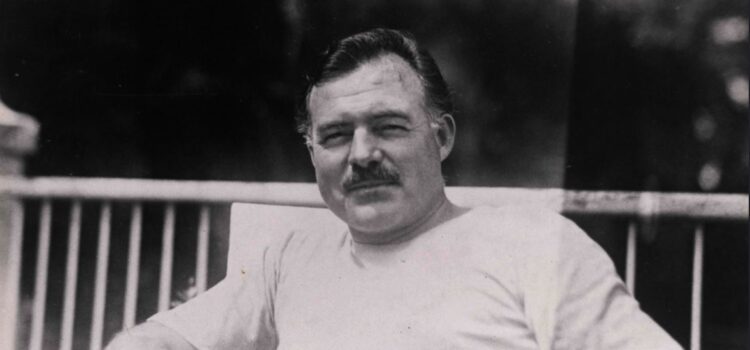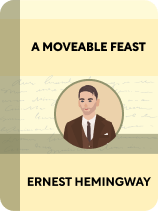

This article is an excerpt from the Shortform book guide to "A Moveable Feast" by Ernest Hemingway. Shortform has the world's best summaries and analyses of books you should be reading.
Like this article? Sign up for a free trial here .
What is the reason Hemingway’s memoir wasn’t published until after his death? What is the backstory of A Moveable Feast?
Believe it or not, Hemingway actually forgot about the vignettes he wrote while in Paris until over thirty years after he wrote them. When he re-discovered them in an old trunk, he set out to write his final memoir which became A Moveable Feast.
Here is a Ernest Hemingway’s backstory and an introduction to his memoir.
A Moveable Feast: Background and Context
Ernest Hemingway’s memoir, A Moveable Feast, is a collection of vignettes about his time in Paris between 1921 and 1926. During those years, Hemingway took copious notes about his life. He forgot about them until 1956, when he learned he’d left them in a trunk in the basement of the Hôtel Ritz in Paris in 1930. Upon rediscovering the notes on his years in Paris, he set about writing what would become A Moveable Feast.
Hemingway worked on the memoir until 1960. He died in 1961, and it was published posthumously by his fourth wife, Mary Welsh Hemingway, in 1964.
Born in Illinois in 1899, Hemingway enlisted at age 18 as an ambulance driver in the U.S. Army and served on the Italian front in World War I. After returning, he married his first wife, Hadley Richardson, and they moved to Paris in 1921, where Hemingway served as a foreign correspondent for the Toronto Star.
A Moveable Feast tells the story of a young man of the post-World War I “Lost Generation” and his encounters with literary giants like James Joyce, Ezra Pound, T.S. Eliot, and F. Scott Fitzgerald, as well as famous places like bookstore Shakespeare and Company and its proprietor Sylvia Beach. Many of these writers served as mentors and friends, and Hemingway used many of their techniques in his work, which is famously sparse, simple, and direct.
Hemingway left Paris after meeting his second wife, Pauline Pfeiffer, and was a prolific writer for most of the rest of his life, while living in Key West, Florida, Cuba, and Idaho.
This summary follows the structure of the book, which is largely chronological, and combines some of his short vignettes into larger sections.
Early Days in Paris
Hemingway begins his memoir by describing how the rainy late fall and clear winter weather affected the mood and street life of Paris in the 1920s. The end of fall brought rain and cool weather to Paris. Residents shut the windows, wet leaves covered the ground, and the small shops selling newspapers or herbs closed their doors. Paris seemed bleak, and the Café des Amateurs on rue Mouffetard grew crowded. Patrons kept their distance from foul-smelling drunks while conversing with one another.
Hemingway lived in the hotel where French poet Paul Verlaine died, and in the winter, it got cold in his apartment, which was somewhere between six and eight stories up. He would walk around the city, down the Boulevard St.-Michel and the Boulevard St.-Germain, past the Cluny Museum, and find a café on the Place St.-Michel where he would write.
One day at the cafe, as Hemingway was writing a story about Michigan and thinking about how the cold and clear weather in Paris was similar to winter in the Midwest, an attractive woman entered. Hemingway knew that he needed to finish his work, so he buried himself in the story and in rum St. James. By the time he finished the story, the woman had left, and Hemingway felt sad for a moment. His mood improved, though, as he began to think about getting away from Paris for a little while and writing in the countryside with his wife Hadley.
When Hemingway got home and suggested a trip, Hadley wanted to leave right away. They set off in the hope that when they came back, it would be clear in the city.

———End of Preview———
Like what you just read? Read the rest of the world's best book summary and analysis of Ernest Hemingway's "A Moveable Feast" at Shortform .
Here's what you'll find in our full A Moveable Feast summary :
- Ernest Hemingway's autobiography about his life in Paris between 1921 and 1926
- How Hemingway knew so many other great authors of the time
- Why F. Scott Fitzgerald was a toxic yet valuable friend to Hemingway






